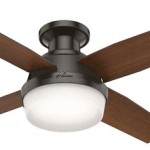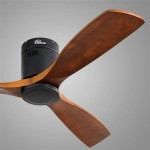Can Lights For Ceiling Tiles: An Essential Guide
Can lights, also known as recessed lighting, are a popular choice for residential and commercial spaces alike. When installed in ceiling tiles, they provide ample illumination while maintaining a sleek and modern aesthetic. Choosing the right can lights for ceiling tiles involves considering various factors, including size, shape, and functionality. In this comprehensive guide, we will explore the essential aspects you need to know to make an informed decision.
1. Size and Shape
The size and shape of can lights play a vital role in determining their suitability for ceiling tiles. Standard can lights come in a variety of sizes, ranging from 4 inches to 6 inches in diameter. The size you choose should be proportionate to the size of the ceiling tiles. For example, a 4-inch can light is ideal for 2x2-foot ceiling tiles, while a 6-inch can light pairs well with 2x4-foot ceiling tiles.
As for the shape, round can lights are the most common type. However, square can lights are also available, adding a contemporary look to any space. The shape you select depends on your personal preference and the overall design scheme.
2. Wattage and Brightness
The wattage of can lights determines their brightness output. Higher wattage can lights emit more light, while lower wattage can lights produce less light. The wattage you need for your ceiling tiles depends on the size of the room, the amount of natural light, and the desired ambiance. For a typical bedroom, a 50-watt can light may be sufficient, while a larger living room might require a 100-watt can light.
3. Color Temperature
The color temperature of can lights refers to the perceived warmth or coolness of the light they emit. It is measured in Kelvin (K). Warm white light (2700K-3000K) creates a cozy and inviting atmosphere, while cool white light (4000K-5000K) provides a more invigorating and focused ambiance. Daylight white light (6000K-7500K) simulates natural daylight and is often used in commercial settings.
4. Trim Options
Can lights come with a variety of trim options that allow you to customize their appearance. Baffle trims create a deep recess around the light source, reducing glare and creating a more diffused light pattern. Reflector trims feature a reflective surface that directs light in a specific direction, providing accent lighting or highlighting artwork.
Other trim options include wall wash trims, which distribute light evenly across a wall, and shower trims, designed for use in showers or other wet environments. The trim you choose should complement the overall design of the space and the desired lighting effect.
5. Installation
Installing can lights in ceiling tiles requires some technical knowledge and safety precautions. It is recommended to consult a qualified electrician for proper installation. The process involves cutting a hole in the ceiling tile to fit the can light housing and connecting the electrical wires according to the manufacturer's instructions. Once installed, can lights provide a long-lasting and energy-efficient lighting solution that enhances the functionality and aesthetics of any room.

How To Put Recessed Lights In The Ceiling

Basement Drop Ceiling Tiles Finishing

Regal Ceiling Tile Antique Nickel Waterproof

10 Drop Ceiling Ideas To Dress Up Any Room Bob Vila

Diy Recessed Lighting Installation In A Drop Ceiling Tiles Part 3 Super Nova Adventures

Elevator Interior Ceilings Cab Lighting Inpro

Linear Lighting Integration Armstrong Ceiling Solutions Commercial

Orb Frosted Ceiling Tiles

Easiest Way To Spray Paint Recessed Light Trim In 5 Mins

Led Recessed Lights Best Ceiling Lighting
Related Posts








